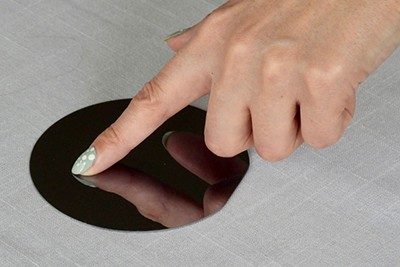FOR IMMEDIATE RELEASE | March 23, 2022
Stimulating the sense of touch with chemistry
Note to journalists: Please report that this research will be presented at a meeting of the American Chemical Society.
A media briefing on this topic is available at www.acs.org/ACSSpring2022Briefings.
SAN DIEGO, March 23, 2022 — Our eyes may be windows on the world, but our fingertips put us in touch with it. To recreate this tactile sense, current technology relies on tiny motors and electricity. However, the bumps and buzzes they generate are not that good at mimicking the real thing. Today, scientists report evidence that our skin can perceive subtle differences in chemistry — findings they hope could provide the basis for a new way to control touch and better integrate it into applications, such as virtual reality.
The researchers will present their results at the spring meeting of the American Chemical Society (ACS). ACS Spring 2022 is a hybrid meeting being held virtually and in-person March 20-24, with on-demand access available March 21-April 8. The meeting features more than 12,000 presentations on a wide range of science topics.
“When you touch an object, you're feeling its surface, and you can change how it feels by changing the friction between that surface and your finger. That’s where the chemistry comes in,” says Charles Dhong, Ph.D., the project’s principal investigator. “We think materials chemistry could open the door to recreating more nuanced sensations, whether you're designing a surface to feel a certain way, or creating feedback devices for virtual reality.”
Of the five senses, technology has embraced some more readily than others. Computer monitors, smart phone screens and virtual reality headsets offer detailed, even immersive, imagery. Audio devices, too, recreate voices, music and other sound in high fidelity. Progress in touch technology, however, has lagged behind, in part because it involves multiple types of sensations, such as temperature and pain. In addition, some efforts to recreate touch have included systems designed to simulate a sense of moving one’s body — a complex sensation.
Dhong’s research at the University of Delaware focuses on a specific type of touch: using the fingers to detect texture. Some methods for evoking this kind of fine touch are already available. A vibrator within a smartphone enables it to attract your attention without ringing. In a refreshable braille display for people with low vision or blindness, an actuator moves pins up to create bumps. This type of touch depends on a physical force, friction, which is the resistance that skin encounters as it brushes against an object. While attributes such as the contours of a surface influence friction, so does chemistry. The structure of the molecules within a substance and the properties of its surface also influence the sensation. Dhong and his colleagues suspected that by altering only chemistry-related features, they could change how a surface feels.
In past work, Dhong’s team asked people to touch single-molecule-thick layers of silane, a silicon-containing compound. None of the silane surfaces possessed detectable differences in smoothness. Even so, those who touched the surfaces could differentiate them based on chemical differences, including the substitution of one atom within each silane molecule for another, because of subtle changes in friction. “Recent research has shown that people can detect the physical differences between surfaces at a resolution as low as 13 nanometers,” Dhong says. “Now we are saying that the sense of touch can also identify chemical changes as small as swapping a nitrogen atom for a carbon atom.”
At the meeting, Dhong will present recent work focusing on polymers, the go-to molecules for synthetic materials. Polymers are distinguished not only by their chemical formulas, but also by a characteristic known as crystallinity, which describes how neatly the chain-like molecules are organized. The polymers in these experiments had identical formulas and molecular weights; only the degree of crystallinity differed.
In their experiments, the researchers focused on the perceived texture of thin layers of polymers. As with the silanes, they asked the subjects to slide their fingers across the polymer. This time, too, they found that people could differentiate between the polymers based only on variations in the friction resulting from subtle changes to the crystallinity of the molecules.
A new approach to controlling fine touch and the perception of texture could have many applications, says Dhong. It could, for example, make it possible to design new types of surfaces, or to better integrate this sense into virtual reality environments. Other applications could include improving devices, such as refreshable braille displays, as well as providing feedback to surgeons conducting surgery remotely, Dhong says.
The researchers acknowledge support and funding from the University of Delaware and the National Eye Institute.
ACS Spring 2022 will be a vaccination-required and mask-recommended event for all attendees, exhibitors, vendors, and ACS staff who plan to participate in-person in San Diego, CA. For detailed information about the requirement and all ACS safety measures, please visit the ACS website.
To automatically receive press releases from the American Chemical Society, contact newsroom@acs.org.
Note: ACS does not conduct research, but publishes and publicizes peer-reviewed scientific studies.
Media Contact
ACS Newsroom
newsroom@acs.org

View larger image

